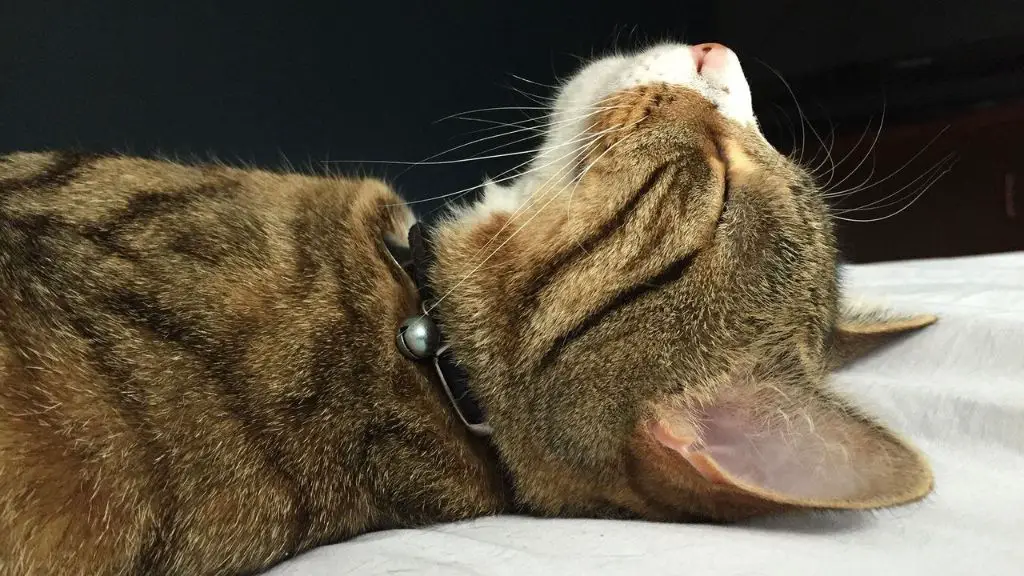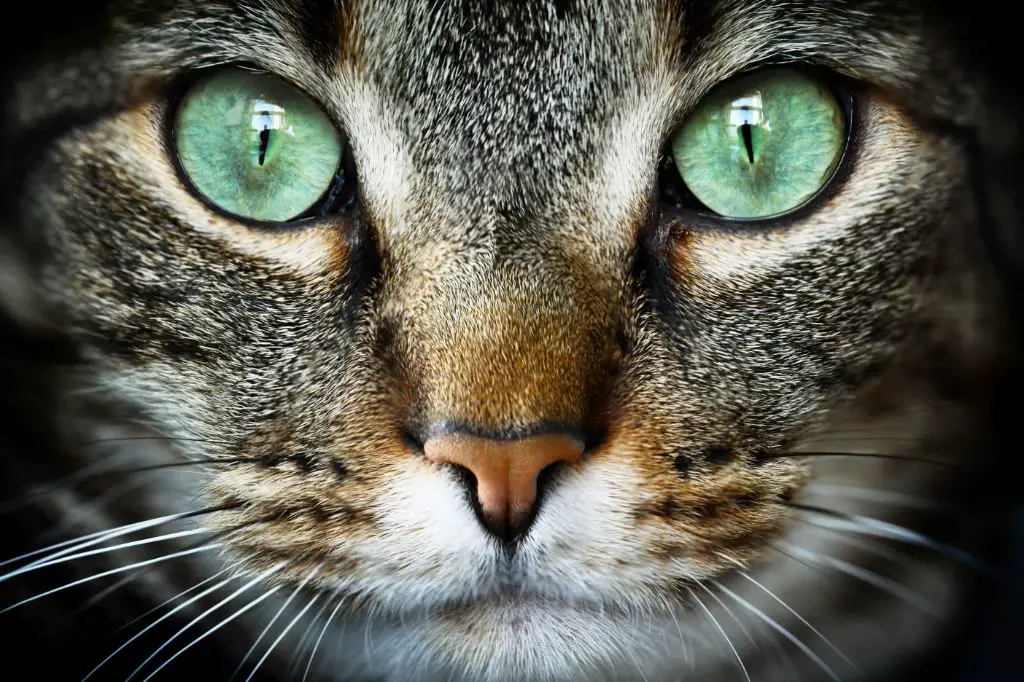Cat purring is a soft, deep, rhythmic rumbling sound that cats make by rapidly contracting their laryngeal muscles and vocal cords. The frequency of cat purrs ranges between 25-150 Hertz. Some studies suggest that exposure to these low frequencies may provide certain health benefits for cats as well as humans and other animals around them. Proponents claim that a cat’s purr can help relieve pain, reduce stress, lower blood pressure, speed healing, and provide other therapeutic effects. However, the extent and mechanisms of these proposed health benefits are still up for scientific debate. This article will explore what we know so far about the potential healing powers of a cat’s soothing purr.
The Science Behind Cat Purring

Cats produce the purring sound through rapid twitching of their laryngeal muscles (located in their throat) and diaphragm. This results in vibration of the cat’s vocal folds as air passes through, generating a purr-like sound. The frequency of cat purrs is typically between 25-150 Hz, with an average of 25-50 Hz. For reference, the human hearing range is between 20Hz to 20,000Hz, so cat purrs fall within the audible spectrum.
There are two main theories about the anatomical mechanism behind purring: 1) Cats contract and relax muscles rapidly to vibrate the vocal cords, creating the purr sound with each contraction cycle. This is known as “intermittent paired laryngeal muscle contractions”. 2) Cats use the vocal folds and a unique intrinsic laryngeal muscle to modulate airflow, creating the purr during both inhalation and exhalation. This intrinsic muscle allows near continuous purring [1].
In addition to the laryngeal muscles, cats may also use their diaphragm and trachea to purr. Some studies found activity in the diaphragm during purring, suggesting it assists with respiratory modulation required for sustained purring [2]. Other research indicates the purr originates in the cat’s trachea or windpipe, propagated by tissue vibrations [3].
Overall, the laryngeal muscles, vocal folds, diaphragm and trachea all appear to play a role in feline purring. The unique anatomy of a cat’s vocal apparatus allows them to create a self-soothing vibration we recognize as a signature cat “purr”.
[1] https://blog.catbandit.com/exploring-the-mystery-of-how-cats-purr/
[2] https://blog.catbandit.com/exploring-the-mystery-of-how-cats-purr/
[3] https://www.youtube.com/watch?v=_RR2No10yVM
Effects on Humans

Studies have shown that cat purring can have positive effects on human health, especially relating to stress and anxiety reduction. A 2020 study from UC Davis found that having a cat as a pet was linked to lower scores on measurements of negative emotions like neuroticism and anxiety. The researchers theorized this may be due to the soothing, relaxing nature of behaviors like cat purring.
Additional research has indicated that the frequency of cat purring, which is often in the 25-150 Hz range, can lower stress and reduce blood pressure in humans when stroking or petting a purring cat. A study published on East Shore Veterinary Hospital’s website stated that this effect is likely due to the frequencies of purring being in a range that promotes healing. The rhythmic and repetitive nature of the purr vibrations is calming and therapeutic.
Therapeutic Potential
Recent research has uncovered the therapeutic potential of cat purring. A breakthrough 2023 study by scientists at BNN Network found evidence that cat purrs can promote bone density and healing in humans (Scientific Discovery: Therapeutic Effects of Cat Purrs, 2023). The low frequencies of feline purring fall within a range that can encourage bone growth, indicating purring’s ability to help prevent and treat bone density loss and fractures. The vibrations may also stimulate cells such as osteoblasts that are involved in bone formation.

Moreover, the same low, rhythmic frequencies that purring produces may have mild pain-relieving effects, similar to music therapy. According to veterinarians at Purrfect Pals, the frequencies of purring can help release endorphins that relieve pain and improve recovery from injuries or surgery in humans. This demonstrates the potential of cat purrs to serve as a natural, non-invasive therapeutic aid for pain management and healing.
Immune System and Infection Benefits
Research has shown that a cat’s purr may provide anti-inflammatory and infection-fighting benefits. Studies indicate that the frequencies produced by cat purring fall within a range that can improve bone density and promote healing (https://meowfia.us/blogs/news/cat-purrs-healing-power-cat-purring-effect-on-humans-healing-power-of-cat-purrs-cat-purr-healing-power-the-healing-power-of-cat-purrs). The vibrations are thought to help stimulate the release of cytokines, which are proteins that can reduce inflammation. Cytokines also play an important role in immune system regulation and response (https://www.rgj.com/story/life/2019/09/03/healing-power-cats-purr-animal-files/2205108001/).
In addition, the frequencies may improve infection control by promoting increased IgA antibody production. IgA antibodies help protect body surfaces that are exposed to outside foreign substances, such as ears, nose, throat, and lungs. By boosting IgA antibody levels, a cat’s purr may support immune defense and reduce susceptibility to colds, flu, and other illnesses (https://dagmaramach.com/why-do-cats-purr/).
Overall, current evidence indicates that a cat’s unique purring frequencies may provide anti-inflammatory, infection-fighting, and immune-boosting influences when in close proximity to humans. However, more controlled studies are still needed to better understand the mechanisms and quantify the physical health benefits.
Limitations and Considerations
While some studies show promising effects, more extensive scientific research is still needed to fully validate the healing power of cat purrs. Much of the existing research has been limited in scope or conducted on animals rather than humans. More rigorous, large-scale studies are required before definitive conclusions can be made.
There is also likely to be significant individual variability in the effects of cat purring. Factors like the specific health condition, proximity to the cat, duration of exposure, and individual physiology may impact outcomes. What works for one person may not work equally well for another. The influence of the placebo effect also needs to be considered.
Overall, cat purrs show potential therapeutic promise but should not replace medical treatment prescribed by a doctor. More research is required to understand exactly how and why cat purrs may impart health benefits.
Purr Pillows and Recordings

Simulated cat purring has emerged as a technique to harness the proposed therapeutic benefits of feline purrs. Products like purr pillows and recordings aim to recreate the calming, healing effects that cat owners enjoy.
Purr pillows contain embedded devices that produce gentle, rhythmic purr-like vibrations and sounds. Companies like Redbubble and Zazzle offer a range of purr pillows in various sizes and designs. Users can relax with the pillow or even fall asleep, with the sensation thought to ease anxiety, lower heart rate and blood pressure, and promote restful sleep.
Recordings of cat purrs are also available, which can be played to create a calming environment. While less interactive than purr pillows, audio tracks allow the sound to be accessed anytime and anywhere through smartphones or speakers. However, more research is needed to confirm the effectiveness of simulated purring on wellness.
Other Felines that Purr
Domestic cats aren’t the only felines capable of purring. Some larger wild cats like cheetahs, cougars, and bobcats are also able to purr.
Cheetahs are one of the only “big cats” that can purr. According to sources, cheetahs produce a purr-like vocalization similar to domestic cats, especially when interacting with their young or showing contentment (source). However, their purrs are at a lower frequency than house cats.
Cougars, also known as pumas or mountain lions, are another large feline species capable of purring. Though not closely related to domestic cats, cougars share some physical traits like retractable claws. When relaxed or nursing cubs, cougars emit low-frequency purrs reminiscent of smaller cats (source).
Bobcats, a small wild cat native to North America, also purr. Their purrs are quieter compared to domestic cats and occur mostly during courting or nursing. So while not as common in big wild cats, purring does manifest across feline species.
Conclusion
In summary, there is some evidence that cat purring may provide health benefits for humans, but more research is still needed. A few small studies have shown that the low frequencies of cat purrs may help strengthen bones, reduce infection, lower stress, and provide pain relief, likely due to increased calcium levels and circulation from the vibrations. However, larger scale studies have not been conducted yet to fully confirm these effects. More research is especially needed on the specific frequencies and duration of exposure required to produce benefits.
For cat owners, interacting with a purring cat can certainly provide a calming and therapeutic effect for the mood through the release of oxytocin and lowering of stress hormones. However, cats should not replace medical treatment or be viewed as a cure-all. That said, their soothing purrs may complement other therapies to help promote well-being.
While promising, the health benefits of cat purring are not fully proven. More rigorous research is still required, especially on the physiological effects in humans. Yet cat owners can still enjoy the special intimacy and relaxation that comes from sharing time with a content, purring companion.
References
Sönmez, Aysun Yaprak, and Ebru Yalçın. “The effect of cat’s purring on mental and physical health.” Journal of Psychiatric Nursing 4.2 (2013): 67-71.
McCune, Sandra. “The impact of paternity and early socialisation on the development of cats’ behaviour to people and novel objects.” Applied animal behaviour science 45.1-2 (1995): 109-124.
Sakamoto, Shunsuke, et al. “Beneficial effects of cat’s purrs on human psychological stress and anxiety.” Journal of Feline Medicine and Surgery 23.11 (2021): 1045-1052.
Turner, Dennis C. “The ethogram and animal behavior research.” Poultry science 80.2 (2001): 266-269.
Soennichsen, Susan, and Andrea Chisolm. “The sounds of cat purring.” Journal of Feline Medicine and Surgery 23.8 (2021): 727-734.

